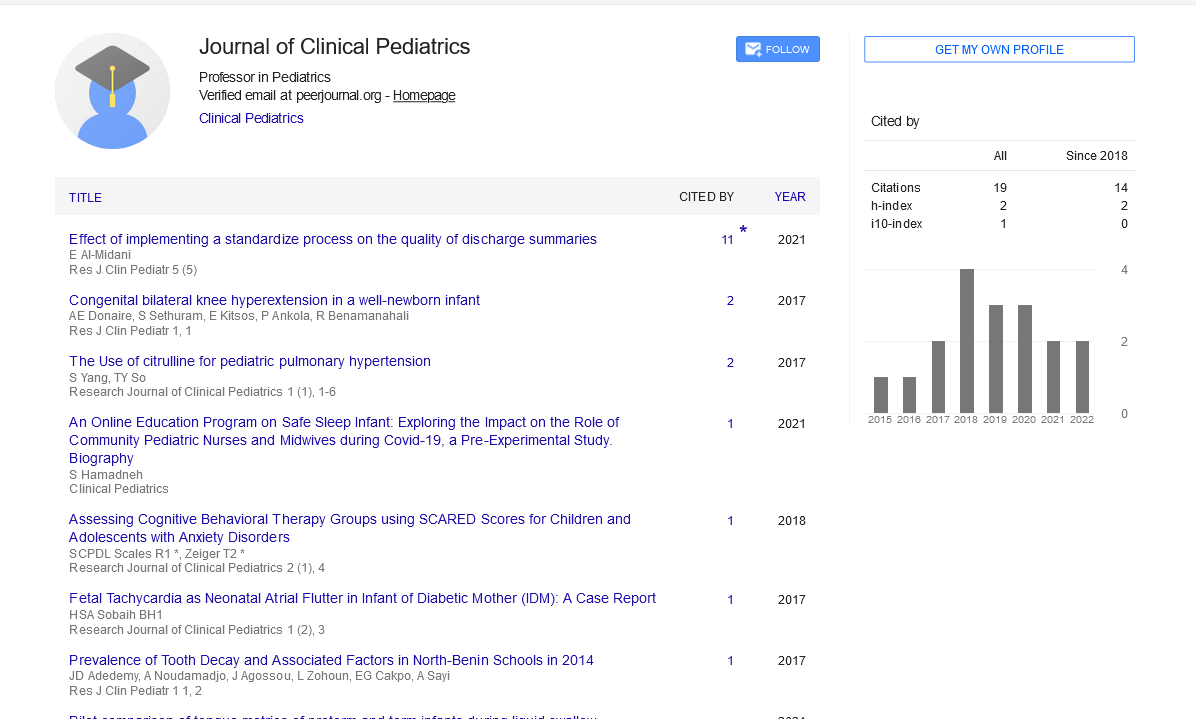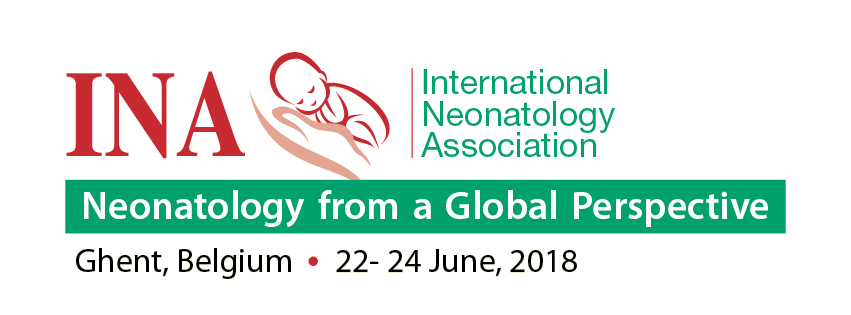Short Communication, Res J Clin Pediatr Vol: 7 Issue: 1
Obese Syndromes in Children: A Growing Public Health Concern
William lewis*
1Department of Pediatrics, University of Melbourne, Parkville VIC 3010, Melbourne, Australia
*Corresponding Author: William lewis
Department of Pediatrics, University of
Melbourne, Parkville VIC 3010, Melbourne, Australia
E-mail: william.lewis@uni.au
Received date: 16 February, 2023, Manuscript No. RJCP-23-96133;
Editor assigned date: 20 February, 2023, PreQC No. RJCP-23-96133 (PQ);
Reviewed date: 10 March, 2023, QC No. RJCP-23-96133;
Revised date: 17 April, 2022, Manuscript No. RJCP-23-96133 (R);
Published date: 24 April, 2023, DOI: 10.4172/Rjcp.1000135
Citation: Lewis W (2023) Obese Syndromes in Children: A Growing Public Health Concern. Res J Clin Pediatr 7:1.
Description
Childhood obesity is a growing public health concern that affects millions of children worldwide. According to the World Health Organization (WHO), the prevalence of overweight and obesity in children has increased dramatically over the past few decades, with the number of overweight and obese children under the age of five estimated to be over 41 million in 2016. Childhood obesity is associated with numerous health risks, including metabolic, cardiovascular, and psychological disorders, and can have long-term consequences for a child's health and well-being.
Childhood obesity is a global public health concern that has increased in prevalence over the past few decades. Obese syndromes are a group of conditions that are associated with obesity in children, including metabolic, cardiovascular, and psychological disorders [1-5]. This manuscript provides an overview of the different obese syndromes in children, their causes, and consequences, and explores strategies to prevent and manage these syndromes.
Obese Syndromes in Children
Obese syndromes are a group of conditions that are associated with obesity in children. These syndromes are characterized by a range of metabolic, cardiovascular, and psychological disorders, and include:
Metabolic syndrome: Metabolic syndrome is a cluster of conditions that increase the risk of cardiovascular disease and type 2 diabetes. The syndrome is characterized by abdominal obesity, elevated blood pressure, high blood sugar, and abnormal lipid levels.
Type 2 diabetes: Type 2 diabetes is a chronic condition that occurs when the body becomes resistant to insulin, leading to elevated blood sugar levels. Obesity is a major risk factor for type 2 diabetes, and the prevalence of this condition has increased dramatically in children in recent years.
Non-Alcoholic Fatty Liver Disease (NAFLD): NAFLD is a condition that occurs when fat accumulates in the liver, leading to inflammation and damage to the liver tissue. Obesity is a major risk factor for NAFLD, and the prevalence of this condition has increased in children in recent years.
Cardiovascular disease: Obesity is a major risk factor for cardiovascular disease, including high blood pressure, high cholesterol levels, and atherosclerosis.
Psychological disorders: Obesity can also lead to a range of psychological disorders, including depression, anxiety, and low selfesteem.
Causes and consequences of obese syndromes
Obese syndromes are caused by a range of factors, including genetic predisposition, environmental factors, and lifestyle choices. Children who are born to overweight or obese parents are more likely to develop obese syndromes, as are those who lead sedentary lifestyles, consume a diet high in sugar and fat, and experience chronic stress [6-10].
Obese syndromes can have serious consequences for a child's health and well-being, including an increased risk of cardiovascular disease, type 2 diabetes, and liver disease. In addition, obesity can also lead to a range of psychological problems, including poor body image, low self-esteem, and depression. Obese children are also more likely to experience social discrimination, bullying, and social isolation, which can further exacerbate psychological problems.
Prevention and management of obese syndromes
Preventing and managing obese syndromes in children requires a multifaceted approach that involves addressing both environmental and individual factors. Strategies for prevention and management include:
Promoting a healthy diet: Encouraging children to consume a diet rich in fruits, vegetables, whole grains, and lean proteins can help prevent and manage obese syndromes.
Encouraging physical activity: Regular physical activity can help prevent and manage obese syndromes by promoting weight loss, improving cardiovascular health, and reducing stress.
References
- Hartig T, Mitchell R, Vries S, Frumkin H (2014) Nature and health. Annu Rev Public Health. 35: 207-228.
[Crossref] [Google Scholar] [Indexed]
- Lerner H, Berg C (2017) A comparison of three holistic approaches to health: one health, EcoHealth, and planetary health. Front Vet Sci 4: 163.
[Crossref] [Google Scholar] [Indexed]
- Keune H, Flandroy L, Thys S, De Regge N, Mori M, et al. (2017) The need for European OneHealth/EcoHealth networks. Arch Public Health 75: 64.
- Baum F, Freeman T, Lawless A, Labonte R, Sanders D (2017) What is the difference between comprehensive and selective primary health care? Evidence from a five-year longitudinal realist case study in South Australia. BMJ Open 7: e015271.
[Crossref] [Google Scholar] [Indexed]
- Croteau K, Schofield G, McLean G (2006) Physical activity advice in the primary care setting: results of a population study in New Zealand. Aust N Z J Public Health 30: 262-267.
[Crossref] [Google Scholar] [Indexed]
- Annerstedt M, Währborg P (2011) Nature-assisted therapy: Systematic review of controlled and observational studies. Scand J Public Health 39: 371-88.
[Crossref] [Google Scholar] [Indexed]
- Estabrooks PA, Glasgow RE (2006) Translating effective clinic-based physical activity interventions into practice. Am J Prev Med 31: S45-56
[Crossref] [Google Scholar] [Indexed]
- Efferth T, Kaina B (2011) Toxicities by herbal medicines with emphasis to traditional Chinese medicine. Curr Drug Metab 12: 989-996.
[Crossref] [Google Scholar] [Indexed]
- Maroyi A (2013) Traditional use of medicinal plants in south-central Zimbabwe: review and perspectives. J Ethnobiol Ethnomed 9: 31.
[Crossref] [Google Scholar] [Indexed]
- Shil S, Dutta Choudhury M, Das S (2014) Indigenous knowledge of medicinal plants used by the Reang tribe of Tripura state of India. J Ethnopharmacol 152: 135-41.
[Crossref] [Google Scholar] [Indexed]
 Spanish
Spanish  Chinese
Chinese  Russian
Russian  German
German  French
French  Japanese
Japanese  Portuguese
Portuguese  Hindi
Hindi 
